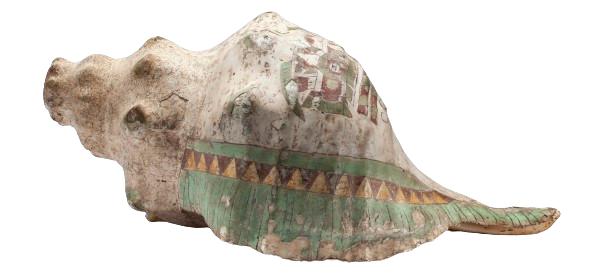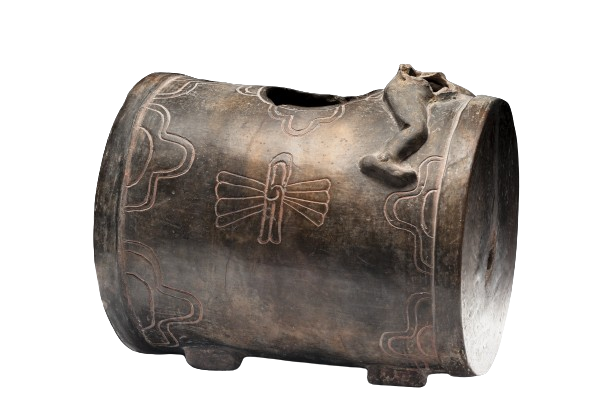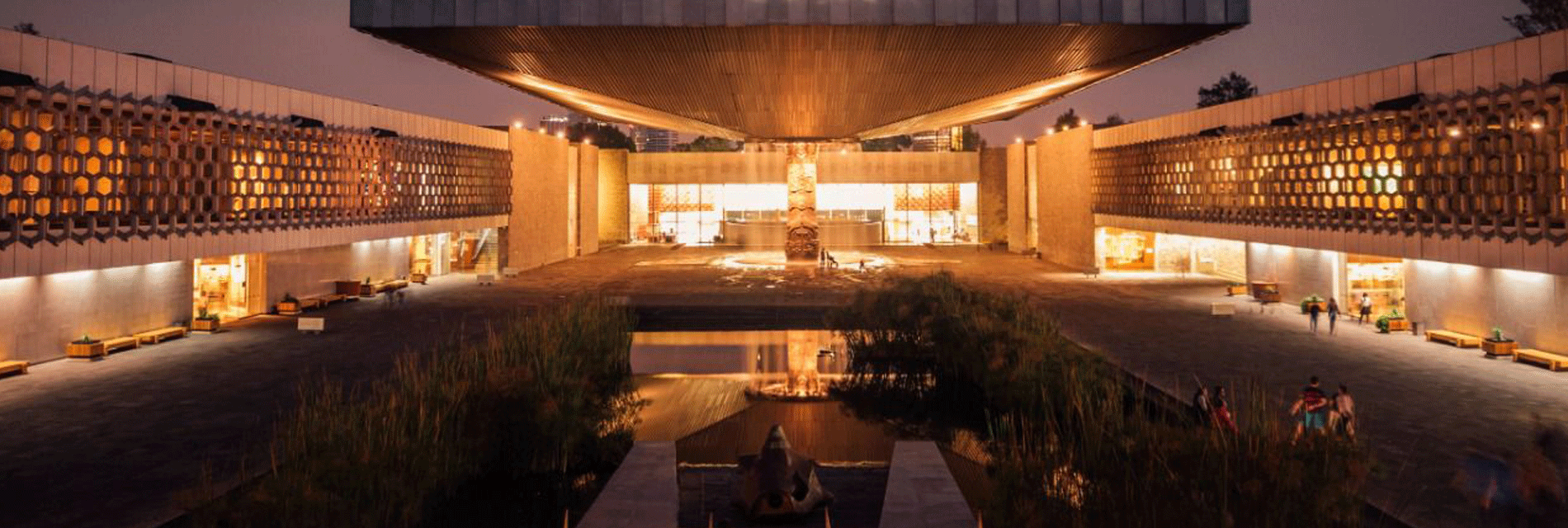


Since its creation (1964), the NMA has been one of the most important museums in Latin America due to its commitment to research, conservation, restoration, exhibition, and dissemination of archaeological and ethnographic heritage, as well as modern and contemporary artistic works. The diverse collections are housed in 22 permanent rooms organized according to the period and region of origin of the objects, which bear witness to the cultural and social richness of Mexico throughout history. In addition, the museum houses the National Library of Anthropology and History, two temporary exhibition halls and three auditoriums where congresses, symposiums, presentations, concerts, among other activities that have had a significant impact on humanistic and social scientific dissemination have been held.

The collections of musical instruments and sound objects (more than 500 approximately) are exhibited in the halls and conserved in the storerooms. The Museum offers to the visitors two major exhibition areas: the archaeological and the ethnographic. In the first one they will be able to witness the material culture of halls dedicated to the Settlement of America, Preclassic Central Highlands, Teotihuacan, Toltecs and the Epiclassic, the Mexicas, Cultures of Oaxaca, Cultures of the Gulf Coast, the Mayas, Cultures of the West and Cultures of the North. Among many objects, some of the musical instruments in the exhibits are clay flutes, huehuetl (ancient drums), teponaztli (percussion idiophones), ludidores (scrapers), rattles, vessels, ocarinas, among others.
The second area —ethnographic— shows cultures from the Gran Nayar, Puréecherio, Otopame, Sierra de Puebla, Oaxaca: Indian Peoples of the South, Cultures of the Gulf of Mexico, Maya peoples of the plains and jungles, Maya peoples of the mountains, The Northwest: Sierras, Deserts and Valleys, and The Nahua. In this groups, the museum holds plucked stringed instruments, like the canari, or fretted, like the raweri; flutes, drums of one or two membranes, maracas, bows, rattles, etcetera. They also show zoomorphic and anthropomorphic representations associated with pre-Columbian cultures, as well as costumes and objects of daily life of the ethnic groups exhibited in these rooms. The museum also preserves scores, written documents and objects associated with music from different moments in Mexican history.

The NMA building has more than 45,000 square meters and is an emblem of 20th century architecture. It was built by a team headed by Mexican architect Pedro Ramírez Vázquez, and since then it has received nearly three million visitors a year from all regions and nationalities. Its ample spaces and the originality of the environment complement the public's experience and allow them to enjoy their journey in a unique way.

The NMA is located in the Polanco neighborhood, in the west of Mexico City, which is one of the most attractive areas for recreational and cultural activities. In addition, in this area there are other important museums that visitors can reach on foot, such as the Tamayo Museum (of modern and contemporary national and international art), the Museum of Modern Art, the National History Museum "Castillo de Chapultepec", the Jumex Museum (a forum for important artists and contemporary proposals) and the Soumaya Museum (with Mexican and foreign collections from different periods).
The Polanco area also offers the possibility of staying in luxury or low-cost hotels, depending on the visitors' possibilities. There is also a large offer of Air B&Bs in case members want to share an apartment or a room at a lower cost than a hotel. Twenty minutes away from Polanco is the Historic Center, where there is also a great offer of all kinds of hotels, hostels, and apartments.
Additionally, the location of the NMA offers the possibility of visiting parks, avenues, and restaurants for all kinds of tastes and possibilities. Within short distances it is possible to move to the center of the city and visit the heart of the capital, as well as theaters, bars, historic buildings, emblematic streets, among others. Access to the museum can be on foot from several subway stations, Metrobus or taxi/Uber for those seeking greater comfort. Below is a map with useful information about transportation and access to the NMA.
